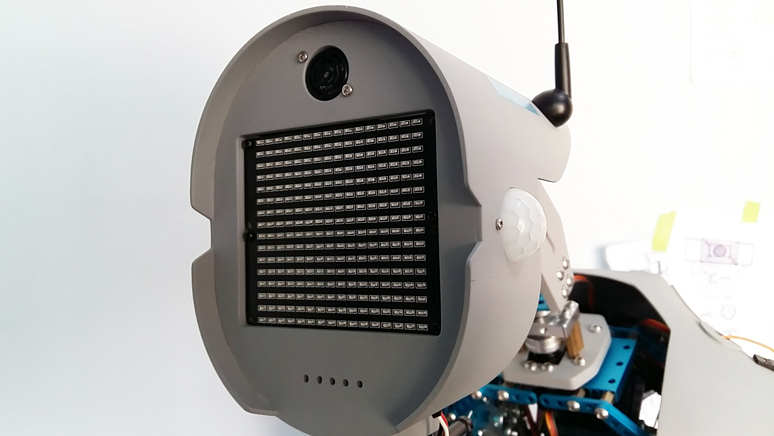 [Dickel]’s robot MDi #4 has been in progress for several years, but what we wanted to draw your attention to is the way the parts have been fabricated and what kind of remarkable results are possible with careful design, measurement, cutting, and finishing. Much of MDi #4 was made by hand-cutting and drilling sheets of high impact polystyrene (HIPS) with a utility knife and layering them as needed. Epoxy and aluminum provide gap filling and reinforcement of key sections, and fiberglass took care of one of the larger sections.
[Dickel]’s robot MDi #4 has been in progress for several years, but what we wanted to draw your attention to is the way the parts have been fabricated and what kind of remarkable results are possible with careful design, measurement, cutting, and finishing. Much of MDi #4 was made by hand-cutting and drilling sheets of high impact polystyrene (HIPS) with a utility knife and layering them as needed. Epoxy and aluminum provide gap filling and reinforcement of key sections, and fiberglass took care of one of the larger sections.
The process [Dickel] follows is to prototype using cardboard first. Parts are then designed carefully in CAD, and printed out at a 1:1 scale and glued to sheets of polystyrene. Each sheet is cut and drilled by hand as necessary. Layers are stacked and epoxied, embedding any hardware needed in the process. Two examples of embedding hardware include sealing captive nuts into parts with epoxy, or using aluminum to add reinforcement. After some careful sanding, the pieces look amazing.
Scroll down a bit on that project page and you’ll see plenty of great photos of the process [Dickel] used. A video highlighting the head and a video showing the careful work that goes into making each part are embedded below.
We’ve seen [Dickel]’s careful attention to detail before with his Mad Mech tracked RC car. Cardboard is an effective material for prototyping and design, and while it’s a bit gimmicky this cardboard Lexus shows off how even nontrivial shapes can be rendered easily in cardboard by slicing them into layers that get stacked.















Wow! Great work! It’s nice to see there are other ways to make things besides 3D printers.
One suggestion: get yourself a Japanese pull saw or even one of these: https://www.amazon.com/Shark-Corp-10-2312-12-Inch-Carpentry/dp/B00004TBPZ/ref=sr_1_13?ie=UTF8&qid=1523111057&sr=8-13&keywords=pull+saw and you’ll never use a hacksaw to cut plastic again. Pull saws have very narrow kerf and leave smooth edges.
+1 More control, cleaner cut, faster, and little to no tear out when cutting wood or bamboo.
I don’t own a traditional western style saw anymore except for a hacksaw for metals and cast plastics. Because of the tight turns I’ve had good luck with a coping saw or scroll saw for plastics like polystyrene sheets. The less surface area of the blade the less heat from the blade and less clumping from the cut.
I have a Shark “Plastic Pipe Hacksaw” that I’ve used until it became a butter knife. Lowe’s doesn’t carry that model anymore, but it was also an Amazon. I have two other brands of pull saw, and love them because of the control and the narrow kerf
I have one of those Japanese saws and it’s worth every penny. It’s amazing. You can mark a cut with a pencil and then split that pencil line in half. Easily. It’s about the closest thing you can get to wielding a lightsaber.
Beautiful work. Vice is nice. Saves fingers and reduces scars.
Johnny 5 has a kid?
Johnny 6 ?
“nice software” looks like Johnny 5 got Stephanie in the end ;-)
Its rather humbling watching videos like that. It looks like the guy is making that in the corner of his bedroom with very basic handtools – I have a 90m2 Shed with lathe, bandsaw, 3d printer, spraybooth, welders and all manner of other tools and Im unable to produce something that looks half as good as that.
It’s all in the materials. HiPS is very easy to cut and sand, and it takes paint really well. This is movie props material, and movie props construction with less emphasis on the structural integrity and more on the looks. Doing it like that lets you get away with all sorts of little “crimes”.
When you plan for everything to be constructed out of sheets, make accurate measurements, and you have a material that cuts nicely without applying much force at all, good results ensue.
Having an eye for design helps.
Design, planning, materials, practice, patience, execution. That’s all it takes.